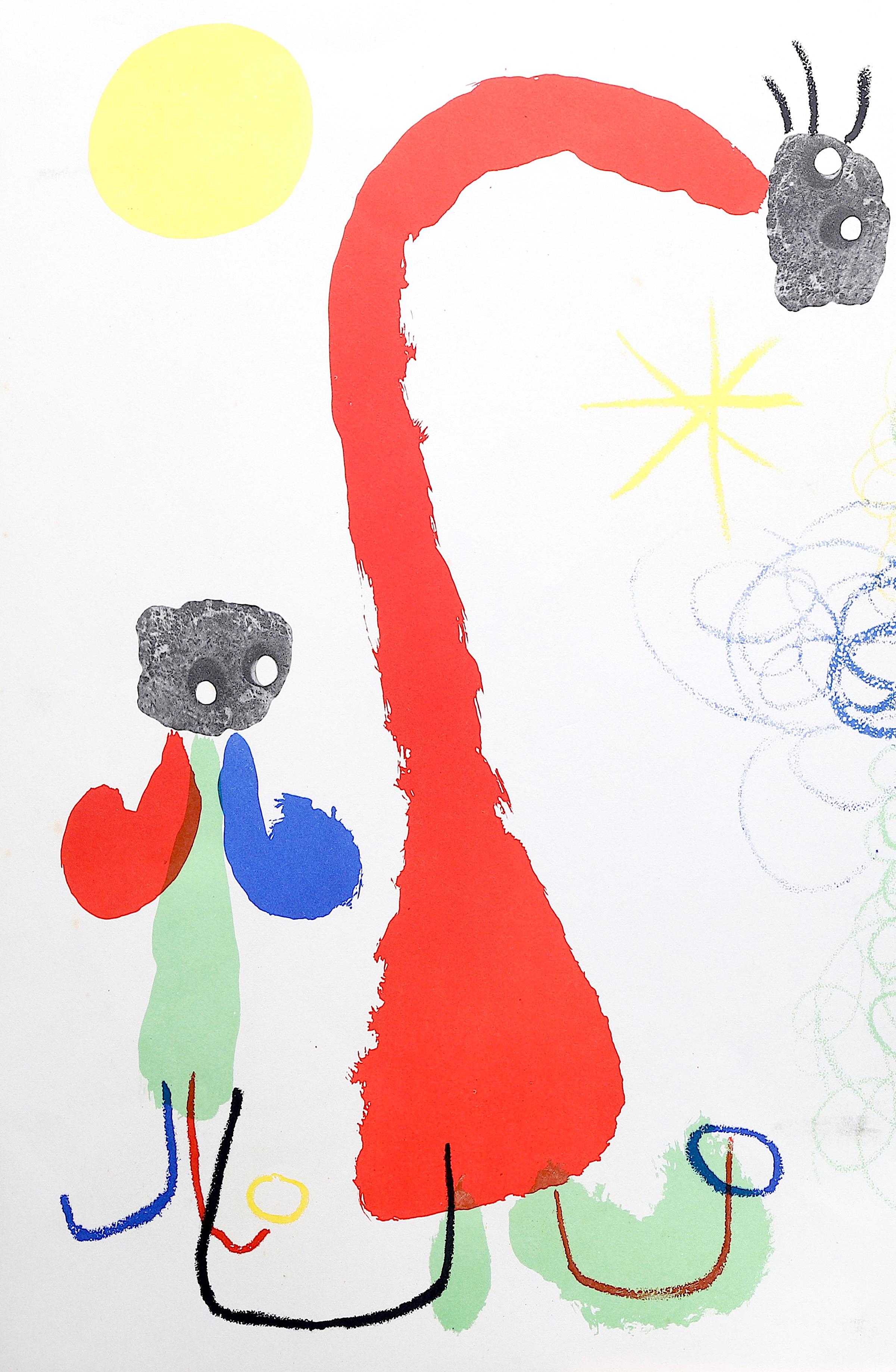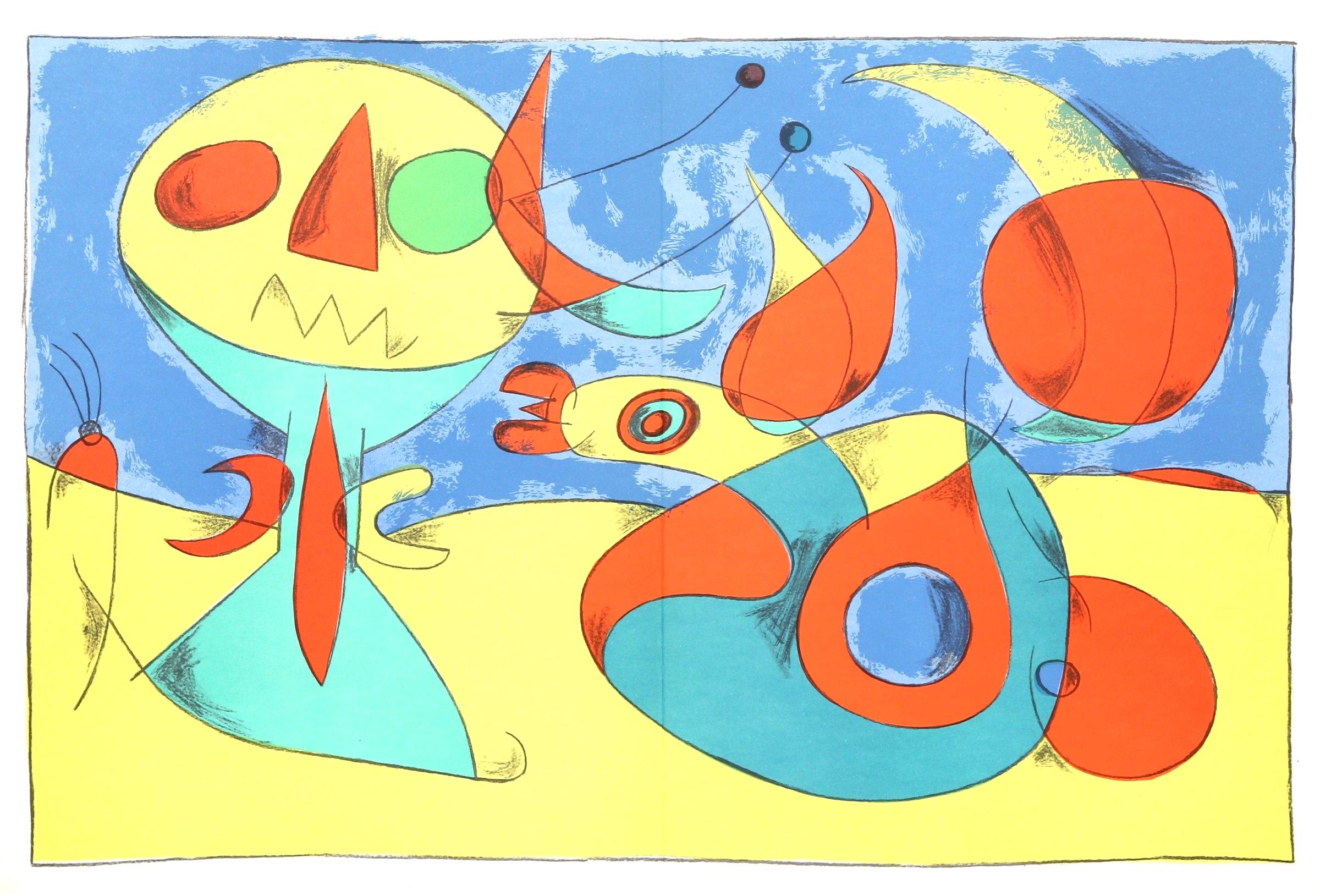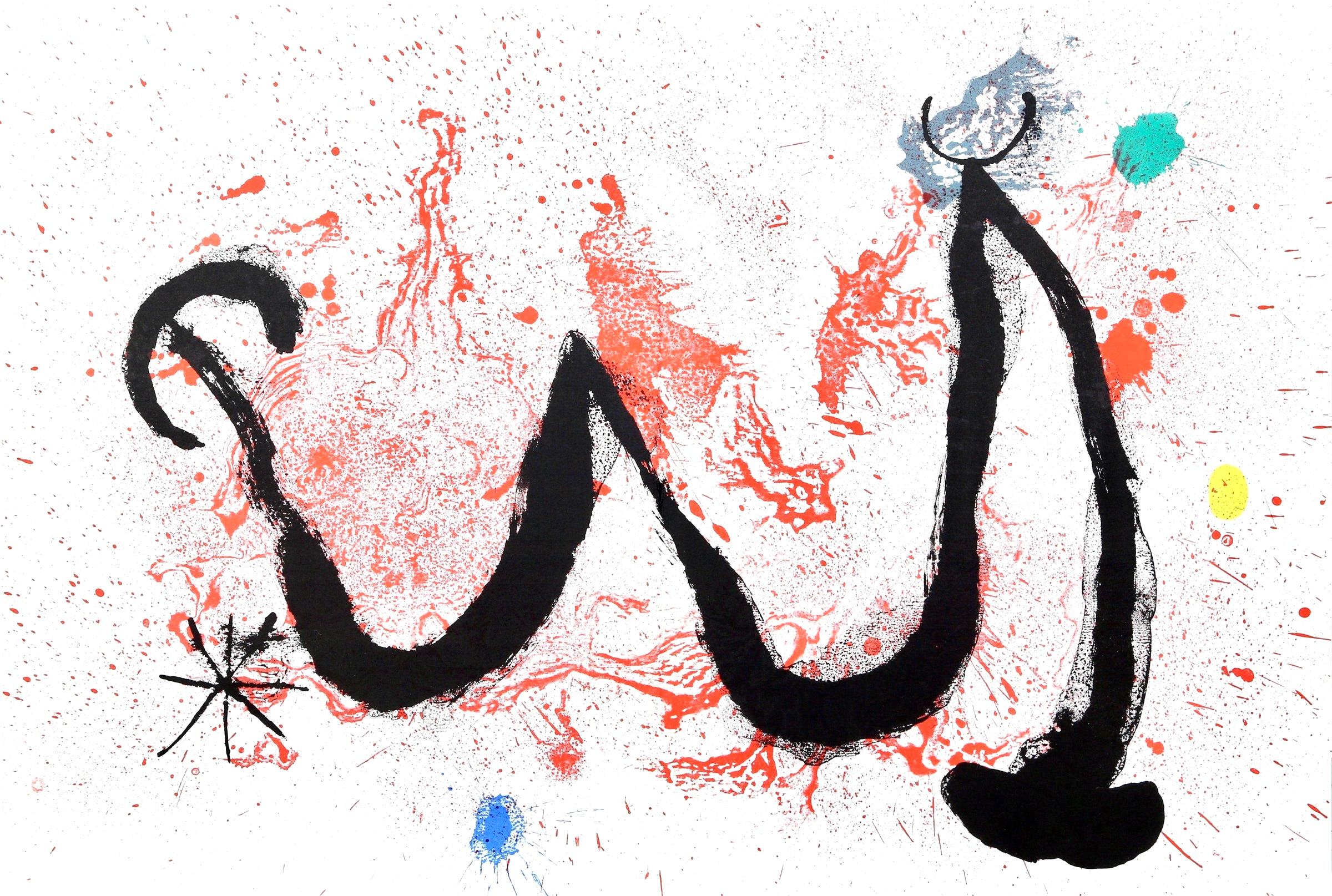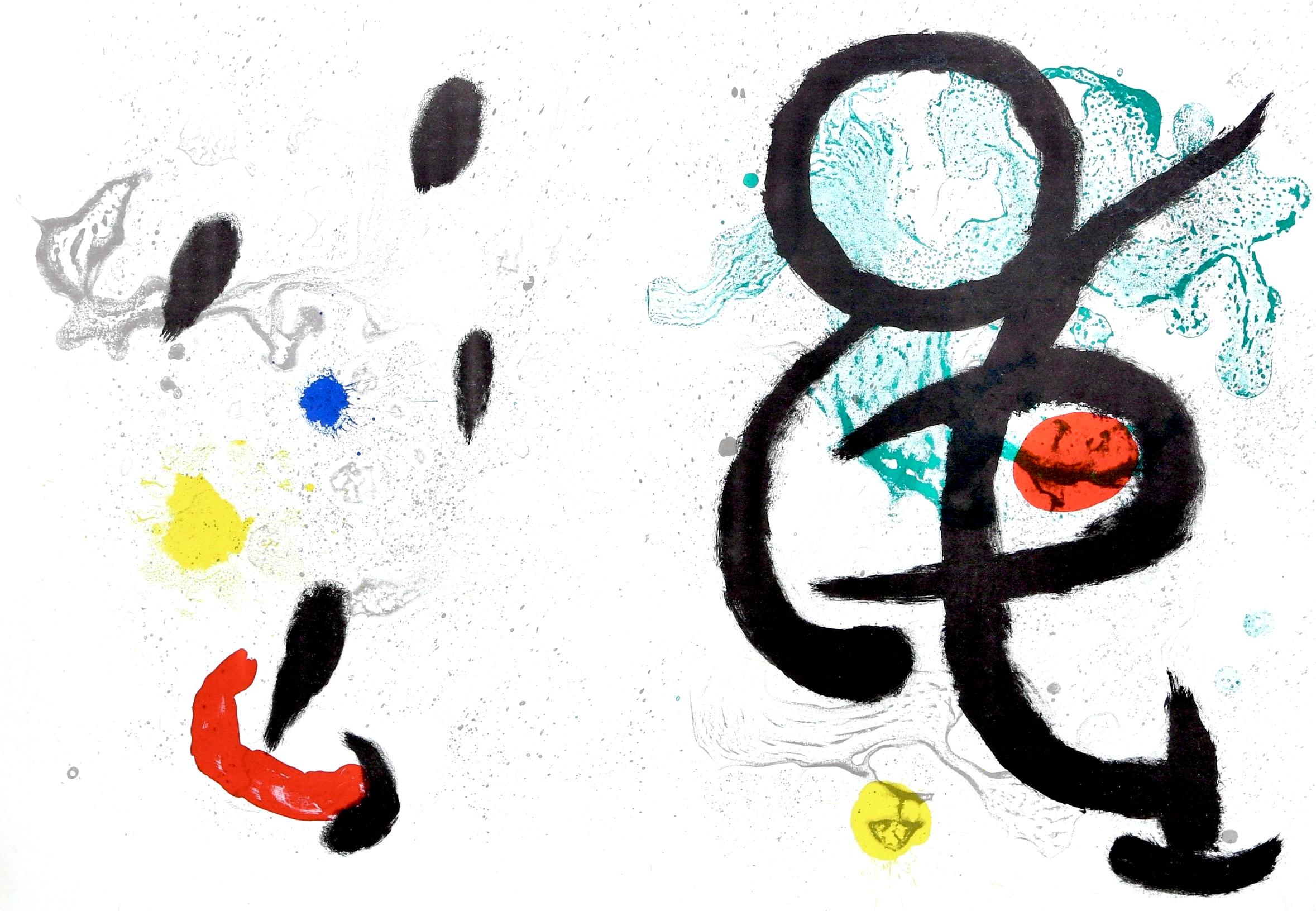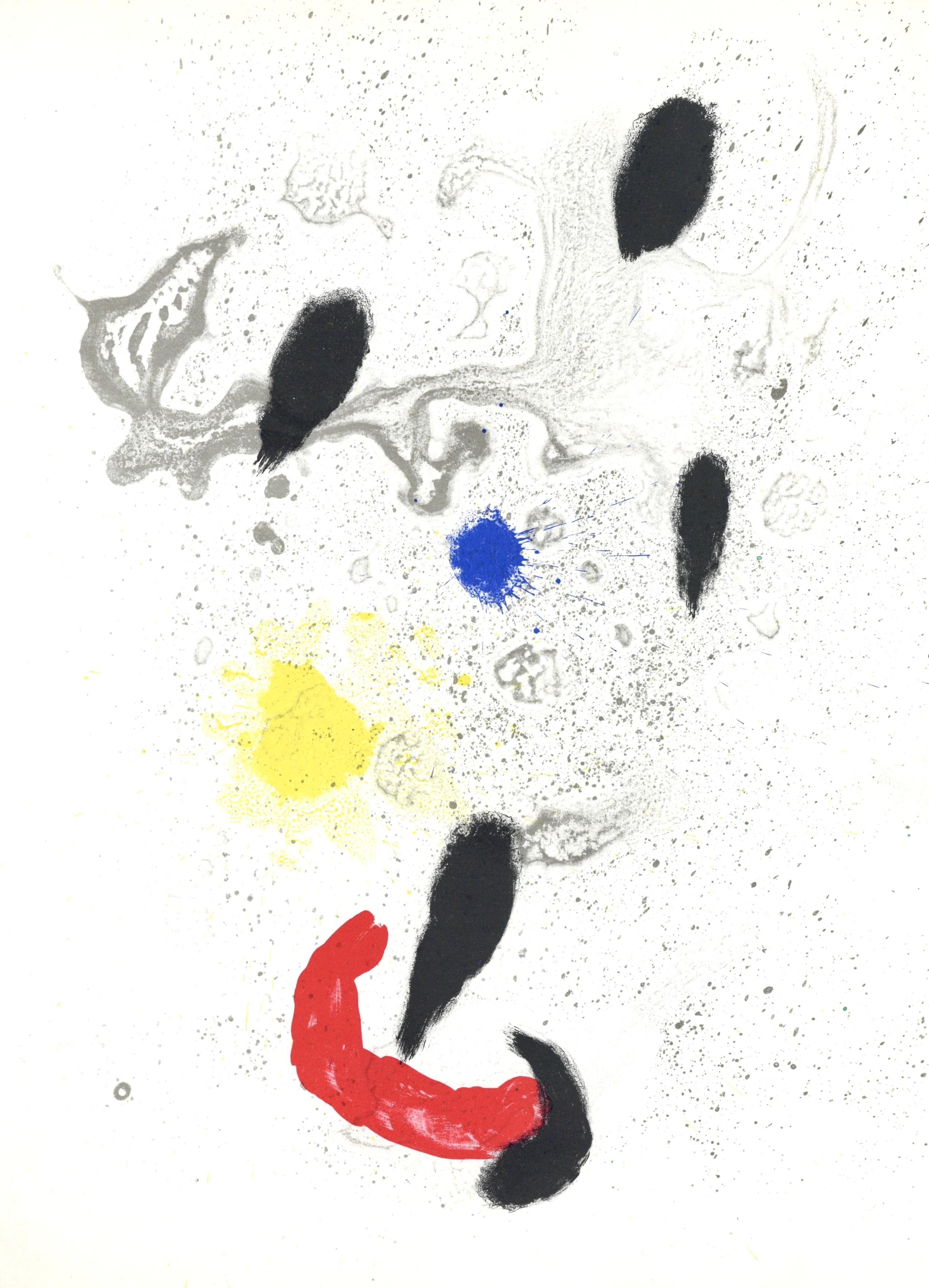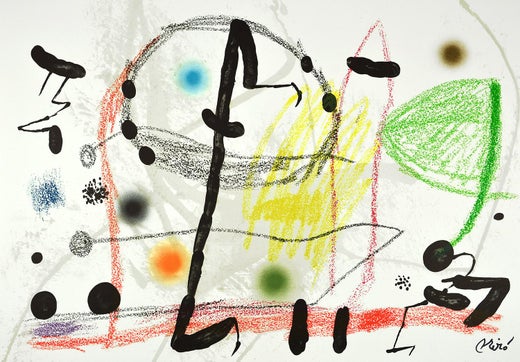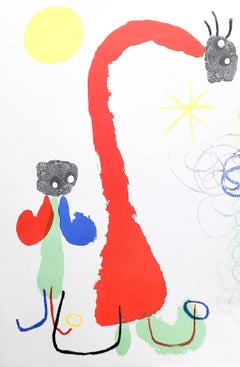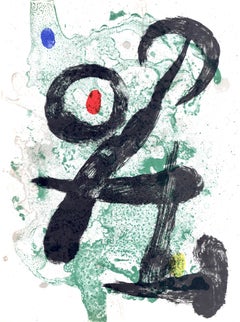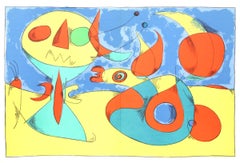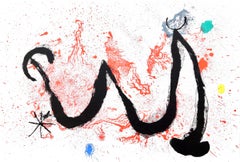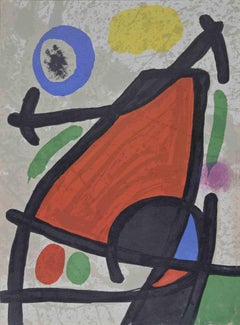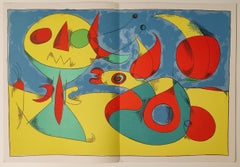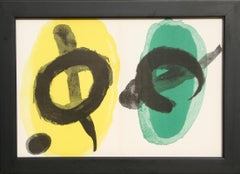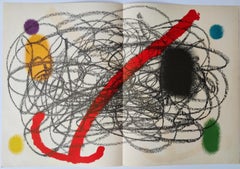Joan MiróComposition (Cramer 23 ; Mourlot 96), Derrière le miroir1950
1950
À propos de cet article
- Créateur:Joan Miró (1893 - 1983, Catalan)
- Année de création:1950
- Dimensions:Hauteur : 38,1 cm (15 po)Largeur : 55,88 cm (22 po)
- Support:
- Mouvement et style:
- Période:
- État:
- Adresse de la galerie:Southampton, NY
- Numéro de référence:1stDibs : LU1465216416052
Joan Miró
Avec son œuvre très diversifiée, qui comprend des peintures , estampes, céramiques, sculptures, gravures sur métal et peintures murales, le moderniste catalan Joan Miró a joué un rôle essentiel dans l'évolution de l'art du XXe siècle vers l'abstraction complète . Bien qu'il soit souvent considéré comme l'un des premiers surréalistes en raison de son imagerie non objective et de son évocation du subconscient, il défie toute catégorisation précise.
L'identité de Miró est largement enracinée dans sa ville natale : Barcelone. Aujourd'hui encore, on y trouve un certain nombre de ses œuvres d'art public, notamment la statue de 72 pieds de haut Dona i Ocell (Femme et oiseau), 1983. Les formes féminines et aviaires, ainsi que les couleurs vives et le thème de la fierté catalane, sont des éléments récurrents dans son travail.
L'univers visuel radical créé par Miró avec ses lignes expressives, ses symboles caractéristiques et ses formes biomorphiques a influencé des peintres américains tels que , les expressionnistes abstraits comme Jackson Pollock et , les peintres Color Field comme Mark Rothko et Barnett Newman.
Mirò a continué à travailler et à expérimenter jusqu'à sa mort, à l'âge de 90 ans, en 1983. Cinq ans auparavant, il avait été cité sur en disant : "J'ai peint ces tableaux avec frénésie, avec une réelle violence, pour que les gens sachent que je suis vivant, que je respire, qu'il me reste encore quelques endroits à parcourir". Je m'oriente vers de nouvelles directions."
Trouvez une collection d'œuvres d'art originales de Joan Miró sur 1stDibs.
- ExpéditionRecherche du devis...Expédition depuis : Southampton, NY
- Politique des retours
Plus d'articles de ce vendeur
Tout afficherannées 1950, Surréalisme, Estampes - Abstrait
Lithographie
années 1960, Surréalisme, Estampes - Abstrait
Lithographie
années 1950, Surréalisme, Estampes - Abstrait
Lithographie
années 1960, Surréalisme, Estampes - Abstrait
Lithographie
années 1960, Surréalisme, Estampes - Abstrait
Lithographie
années 1960, Surréalisme, Estampes - Abstrait
Lithographie
Suggestions
années 1960, Surréalisme, Estampes - Abstrait
Lithographie
années 1960, Estampes et éditions
Lithographie
années 1960, Moderne, Estampes - Abstrait
Lithographie
années 1960, Estampes et éditions
Lithographie
années 1960, Contemporain, Estampes - Abstrait
Lithographie, Offset
années 1960, Moderne, Estampes - Abstrait
Lithographie
